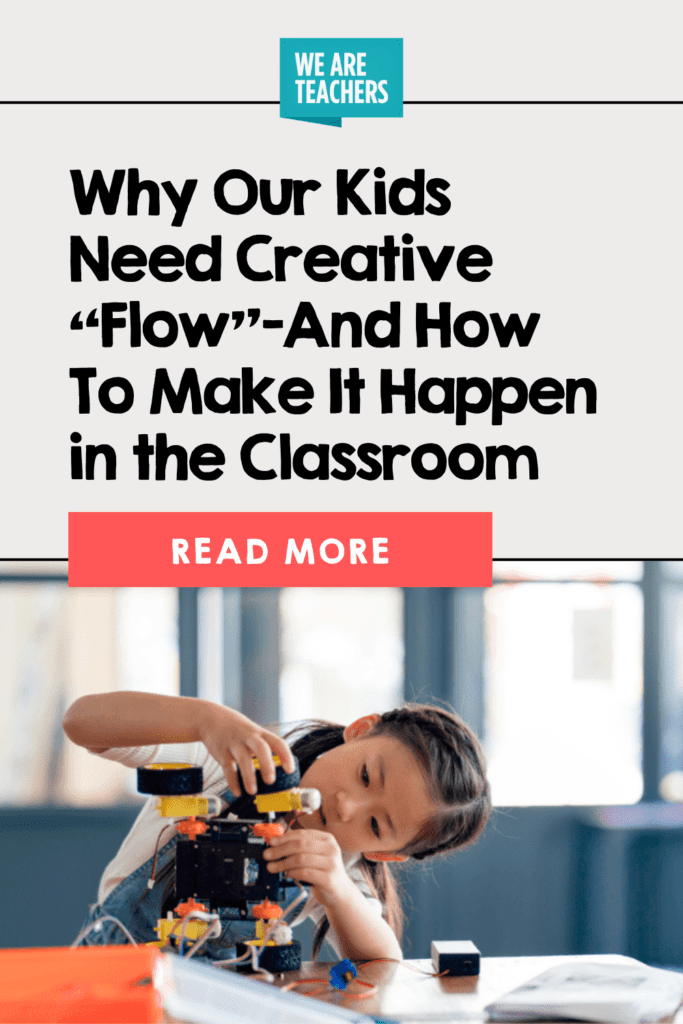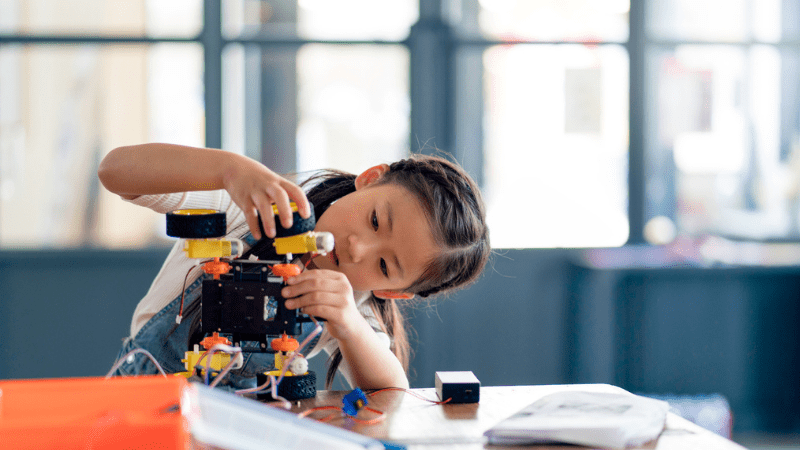“I think therefore I am,” Rene Descartes’s famous pronouncement suggests that as long as we think, we exist. But, as we emerge from the pandemic, it’s clear to mental health professionals that thinking isn’t enough. Children have been doing nothing but thinking on their electronic devices and in remote classrooms, and many are languishing. Anxiety and depression in school-aged children are at all-time highs.
So, as we head back to school, let’s not forget to attend to the non-academic losses our students have experienced. They’ve interacted with peers far too little. They’ve been isolated. To feel whole again, students need to talk, and run, and laugh. They need to do science experiments, grow gardens, act in theater productions, sing in choirs, make music in bands and orchestras, and run and play outside. And they need each other in person, provided that they stay safe. Joy and exuberance, so natural for school kids, can be restored if we commit to lots of active, hands-on learning.
The key to jumpstarting kids’ self-esteem and engagement may rest in the concept of creative “Flow.”
Flow: What It Is and Why It Matters
Thanks to a summer season of sports activities, camp, swimming, social gatherings, family vacations, and minimal time on devices, our kids’ moods and self-esteem are now ramping up. They’re back to experiencing what psychologists call “Flow,” or what we call being in the zone: fully focused, intensely concentrating, and feeling good. When we create states of Flow, time flies, worries get sidelined, and anxiety diminishes.
“The best moments in our lives are not the passive, receptive, albeit relaxing, times,” notes the psychologist Mihaly Csikszentmihalyi, who devised the concept of Flow. In his bestselling book Flow: The Psychology of Optimal Experience, he writes, “Instead, the best moments usually occur when a person’s body or mind is stretched to its limits in a voluntary effort to accomplish something difficult and worthwhile. Flow depends on the ability to engage in intense concentration.”
Here is another description I admire from the Journal of Positive Psychology:
“Flow is one of life’s highly enjoyable states of being, wrapping us entirely in the present, and helping us to be more creative, productive, and happy…The experience of Flow is universal and can occur across all classes, genders, ages, and cultures. In addition, Flow can be experienced during many types of activities.”
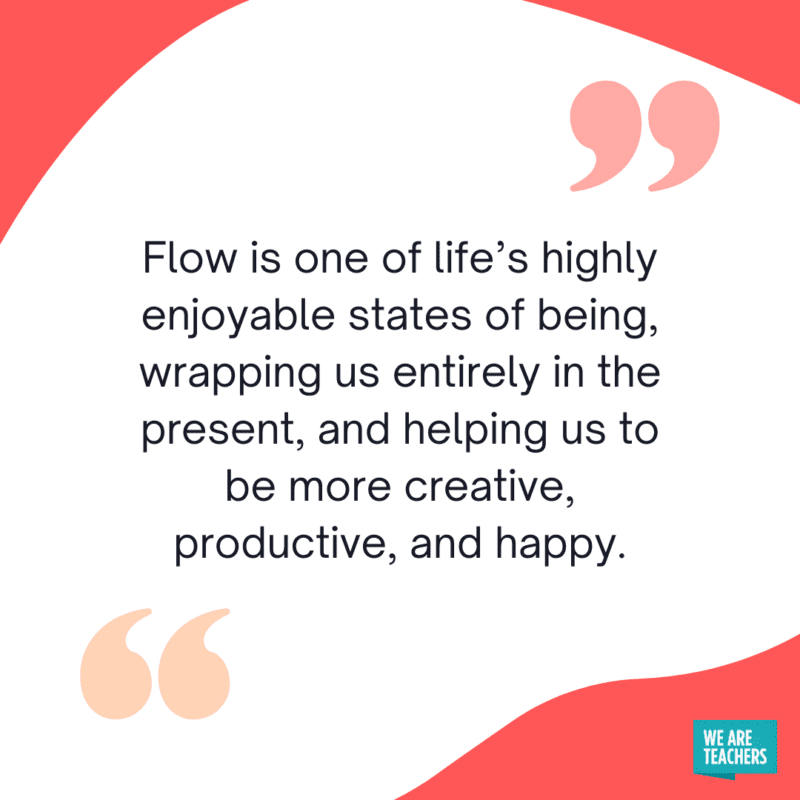
In the decades since Csikszentmihalyi’s psychological theory took hold in professional psychological circles and pop culture, I’ve been concerned that it’s being misunderstood and watered down. I want teachers, parents, and caregivers to understand that Flow is not passive engagement or students in a classroom with eyes locked on a digital reading program. Flow is not performing a duty. Flow is not distraction. At home, Flow is not clicking onto social media sites or binge watching television. Those experiences can be diverting, but they are not as stimulating as the fully immersive experience of Flow.
[contextly_auto_sidebar]
What Teachers Can Do to Nurture Creative Flow
Teachers can help maintain this summer Flow momentum by making action/engagement plans and minimizing time on electronic devices. Our children will then feel sturdier and more zestful. Their self-confidence will bump up. An activity as simple as writing with a pen or a crayon on paper can engender a feeling of solidity and immediacy, lost in computer work.
Examples of activities conducive to states of Flow:
- Outdoors: Grow and tend to a school garden, mixed in with ecology and botany lessons; Recess and sports; birdwatch and study the majesty of trees.
- Music: Choir, band, and orchestras, music-listening for appreciation and to heighten listening skills.
- Educational games: Age-related, with levels of difficulty that adjust according to how each child performs on the game. Note: There is an award-winning, non-violent video game called Flow, featured in the Museum of Modern Art, expressly designed to induce states of Flow.
- Lessons that meet the following criteria: Goals that promote skill-building, provide immediate feedback, and reward each step of success with specific affirming comments. Choose tasks that include manipulatives—objects that students can feel, touch, and hold.
- Science: Engage students in rocket-building contests, putting together Lego models of brains, molecules, and so on provides a hands-on dimension that builds confidence.
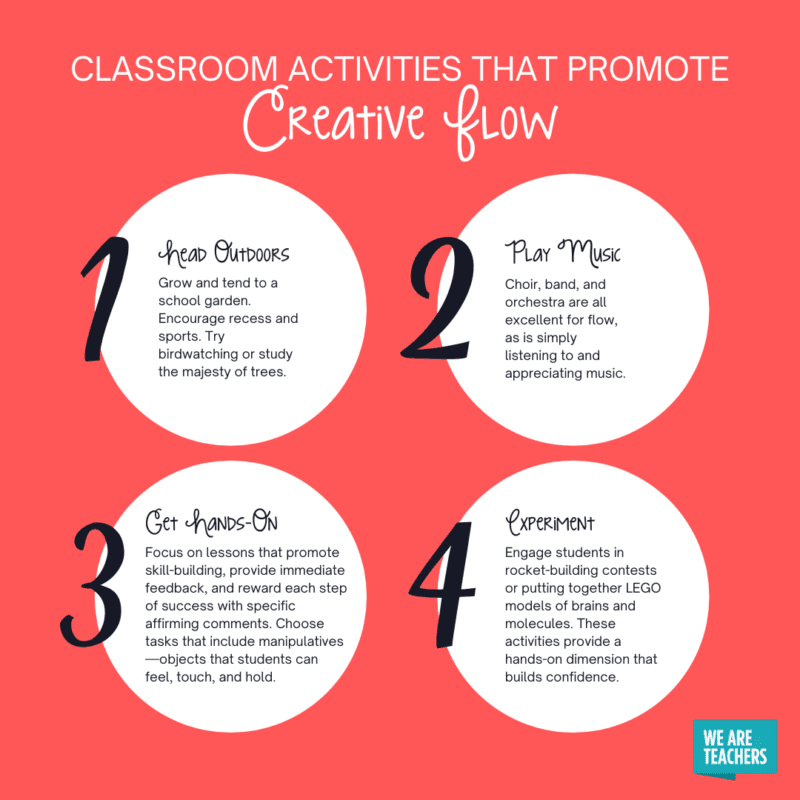
Using Evocative Objects To Promote Creative Flow
One of the most powerful things we can do for students is to provide time and space in the school day for them to reveal themselves to others. This is something that benefits all ages. Sherry Turkle, Ph.D., an MIT Professor of Social Studies of Science and Technology, asks her students to bring in what she calls “evocative objects” to share with their classmates. Turkle is the bestselling author of numerous books and articles, including Reclaiming the Conversation: The Power of Talk in the Digital Age and Evocative Objects: Things We Think With. This last book is a collection of essays by scientists, writers, and artists about favorite objects that inspire, guide, and touch their lives.
I highly recommend this book to educators because its implications for teaching abound. For example, you might even read aloud to students Turkle’s description of how objects became central to her: “As a child, I spent many weekends at my grandparents’ apartment in Brooklyn. Space there was limited, and all of the family keepsakes—including my mother’s books, trinkets, souvenirs, and photographs—were stored in a kitchen closet, set high, just below the ceiling. Each object I found in the closet—every keychain, postcard, unpaired earring, high school textbook with its marginalia, signaled a new understanding of who the family members were and what they might interest them. So, I grew up hoping that objects would connect me to the world.”
Try This
Ask students to share a personal object and tell why it matters. Do this each week. Then, display these evocative objects in the classroom over the following week, inviting classmates to imbibe the special meaning of these shared items. Insight into fellow students will ensue, as will empathy. Sharing evocative objects and why they matter can add a meaningful new dimension to how we know each other. And, these precious objects are tangible, touchable, and three-dimensional.
The Psychology Behind It
Children attach themselves to blankets, stuffed teddy bears or bunnies, and dolls from the earliest age, hugging them just as they embrace their mothers or fathers. Psychologists call these transitional objects. Little ones cope with separation from parents and other loved ones by transferring love and attachment to soft, cuddly things. Children hold on to parents’ love notes in lunchboxes and store away postcards from grandparents. At home, kids populate their desks with photos and objects redolent with personal meaning. Rarely are these private shrines described or shared with others even though we all relish meaningful items throughout life. In recent times, psychologists working with children and adolescents have recognized the profound, steadying influence these objects can have, and so it stands to reason that classroom teachers can tap into their power as well.
Connectedness
Active, hands-on, collaborative─there are so many ways to describe the tactile, meaningful learning experiences students need right now. We might not be able to create states of Flow in every child every day, but we can certainly try. As you plan lessons, invite all of the senses to ignite. Look for ways to ensure full participation from the entire class. Flow is the antithesis of the virtual, vacuous, vaporizing nowhere land of computer-centric remote learning. Introducing Flow-inducing activities into the school day can restore children’s sense of solidity, depleted during this past Covid-dominated one and half years.
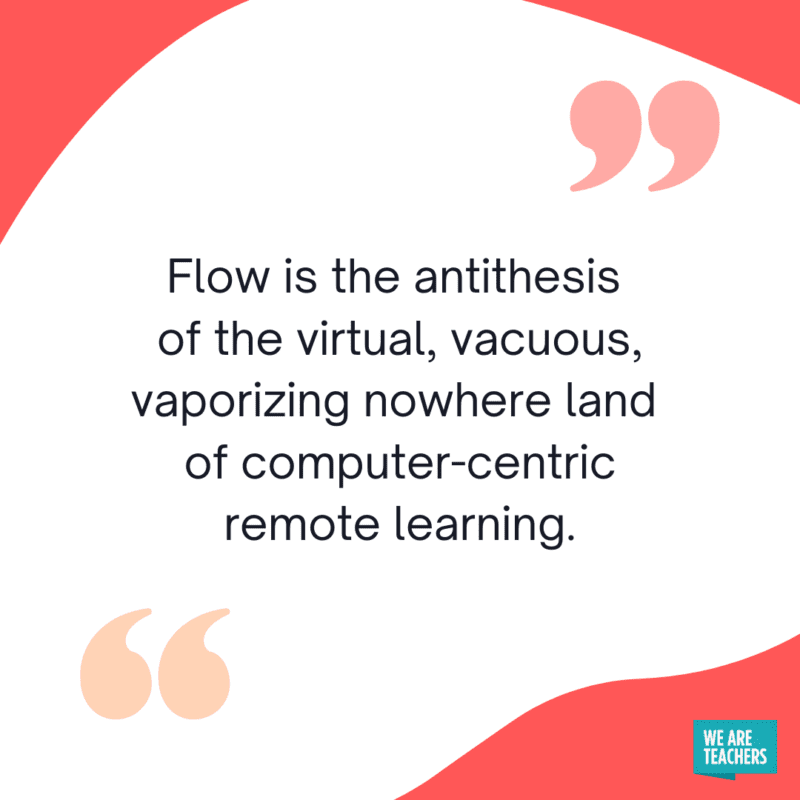
We’d love to hear your thoughts on creative flow and how you nurture it in the classroom. Please share in the comments.
Plus, for more articles like this, be sure to subscribe to our newsletters.
